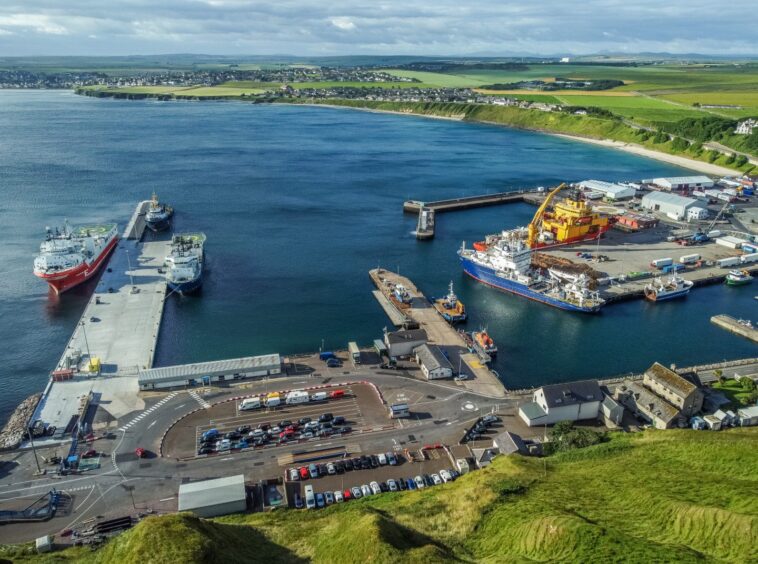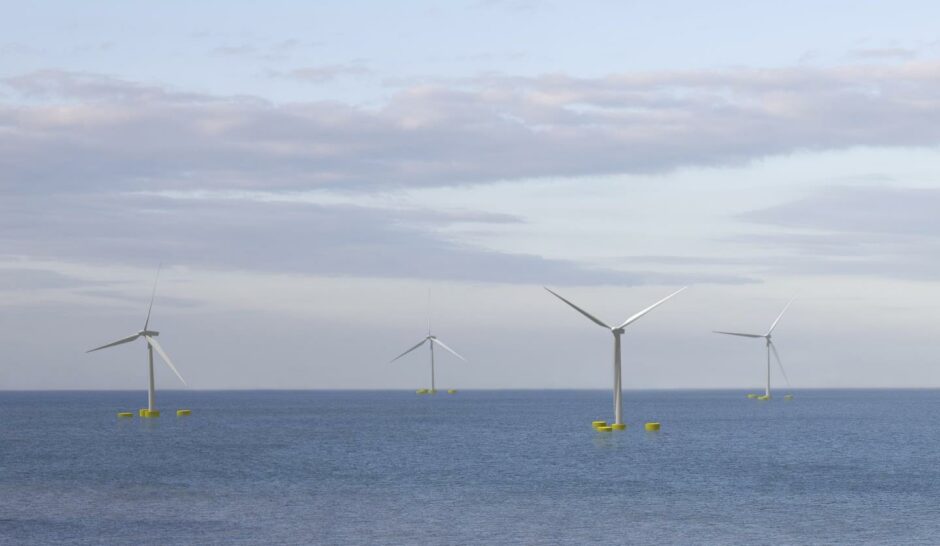
Developers of the Pentland floating wind farm off Caithness say a two-year programme of survey work has now been completed.
Since summer 2021 data has been gathered on wind, wave and seabed conditions from across the Pentland Floating Offshore Wind Farm (PFOWF) site and the route of a cable linking the scheme to the shore.
Located around 5 miles off the coast Caithness, the 100MW scheme will generate enough power for approximately 70,000 homes. It is being built by Highland Wind Limited – a venture majority owned by Copenhagen Infrastructure Partners (CIP) – and overseen by its own development arm, Copenhagen Offshore Partners (COP).
CIP hopes the scheme will act as a testbed to help qualify future large-scale floating wind projects such as those secured as part of the ScotWind leasing round.
Wind and metocean survey data were also recorded using Seawatch Wind Lidar Buoys, deployed by Fugro, which gathered a range of measurements such as wind speeds to inform critical project decisions through development.
Meanwhile, geophysical surveys were performed across the site using a combination of sonar, acoustic, seismic, and magnetic techniques to give the project a detailed understanding of the geophysical properties of the site.
A further geotechnical survey involved a combination of sampling boreholes, cone penetration tests, and in-situ testing to gather information about the lithology and properties of the site.
Much of the work was marshalled from Scrabster Harbour near Thurso, which is also tipped to host a future operations and maintenance base for the wind farm once operational.
COP said the samples extracted by Geoquip Marine, Ocean Infinity and Fugro would help develop a detailed ground model, informing engineering parameters later used for design and installation of turbine foundations and submarine cables.
Project director Richard Copeland said: “This is a significant milestone for any offshore wind development, and we are pleased to have safely and successfully completed a number of survey and monitoring campaigns over the past three years that gives us the data we need to finalise design and prepare for construction.
“We now have a best-in-class data set to help us meet the engineering challenges of this pioneering project, with two years of wind and wave data and a combination of geophysical and geotechnical surveys performed means that the project now has a high-quality 3D integrated ground model.
“We are especially grateful to our supply chain partners Ocean Infinity, Fugro and Geoquip and key local stakeholders such as Scrabster Harbour for helping us complete the work to such a high standard.”
Scrabster Harbour trust manager Sandy Mackie added: “The successful completion of the Pentland survey campaigns is welcomed by Scrabster Harbour.
“The port has been utilised for each of the campaigns, demonstrating the kind of work and benefits offshore wind projects can bring to the area and surrounding community, even in the development stage.
“We look forward to continuing to work with the Pentland team on the development of the project’s Operations & Maintenance base and look forward to continuing to strengthen this relationship in the years to come.”
Last week COP said it had formally submitted proposals to further refine its consenting for the development.
Earlier this year the group said it would reduce the overall offshore site area for the turbines by 50%, to around 4 square miles, and reduce the maximum number of turbines from ten to seven. The use of larger turbine and a maximum tip height of 300m means the scheme will deliver the same power output as prior plans.
PFOWF is planned to be operational in 2026.
 © Supplied by Highland Wind Limite
© Supplied by Highland Wind Limite